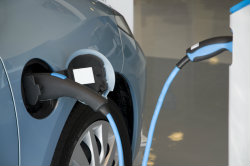DATA SIM: what happens if we all drive electrical vehicles?
The forecasted large-scale uptake of electric vehicles(opens in new window) (EV) will have an impact on how we travel and on where and when we will make demands on the electrical grid. Knowing what the knock-on effect will be once EVs are in general use is key to preparing the way for their uptake. The EU-FP7 project DATA SIM(opens in new window) carried out research to establish the consequences of a mass switch to EVs, in order to recommend actions to policy makers. ‘Big data’ giving a detailed picture of transport use in the EU Until now, researchers have used general criteria, such employment trends within a region, to map traffic flows. Road users kept diaries, logged their trips and answered questionnaires. Although helpful, this information was not totally reliable as people can be inaccurate or imprecise. The project has developed a completely new, and highly detailed, time-space approach based on the use of vast quantities of data from GSM and GPS. This new behavioural model can predict what would happen if we all started driving electric tomorrow. ‘For example, you could compare how many people drive electric, for how long and how far, based on the current technology on the one hand, and how this evolves when technology improves, on the other,’ explains project coordinator, Professor Davy Janssens(opens in new window), based at Hasselt University(opens in new window) in Belgium. Smarter electrical grids Working out what people are doing when they get behind the wheel, and how far they are likely to be going, also means researchers are able to establish what and where energy demands are probably going to be. As Janssens says, ‘You can see whether there is a risk of energy shortages in certain zones when a given number of vehicles are being charged. For example, if too many EVs are charged at the same time, is there a risk that the street lighting will go out?’ These answers will provide useful information for policy-makers, to reinforce the network in those specific locations or to re-design the charging point locations. One key challenge for renewable energy is its intermittency, with peaks and drops in its production. DATA SIM also studied the possibility that the EVs could be used to store the excess of generated energy in peak period, and extra energy stored in the car’s batteries can be fed back into the grid when needed (when the cars are parked). Clever coordination between people and machines Car sharing, car pooling, charging and driving – coordinating how we interact with our vehicles is central to making transportation greener. ‘For the first time data mining, database management, complex systems, transport, energy and computer science have all come together to find practical solutions for mobility’ says Janssens. The project, which ran for three years and ended in August 2014, will continue to build on its achievements to find new solutions for the mobility market through the efficient use of large amounts of data. DATA SIM is considering the creation of two spin off companies, and plans are currently at the development stage. The consortium(opens in new window) that oversaw the project comprised nine partners from seven countries and received EUR 2.3 million investment from the EU. Link to project's website(opens in new window) Links to related video(opens in new window)



